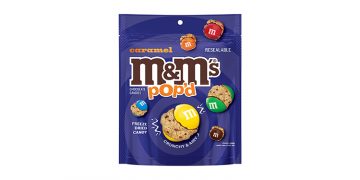Your positioning strategy can make or break your product. It determines customer perception, defines your fit in the market and differentiates you from other brands.
E-commerce opened the floodgates to infinite purchase choices, which means you’re up against countless competitors to capture attention and spend. That makes your product marketing even more high stakes—especially online.
Take a second to think about the last time you visited a store. You probably touched, smelled or tried merchandise before buying. But those sensory experiences aren’t the same when you’re behind a screen, so shoppers rely on packaging, descriptions and reviews before clicking the add-to-cart button.
Your product messaging needs to make the right impression. Claims and attributes play a big role here because these can help you convey the benefits of your SKUs. But which ones should you select? Which are going to be effective?
The answer: match consumer trends with product attributes and measure performance to find your next opportunity.
Here are two tools you can use to improve your positioning strategy. When combined, you get powerful insights into consumer needs and products that are in demand.
Consumer trends
You have to keep a pulse on evolving consumer behavior to align product offerings to new expectations.
Our values and needs change with the world around us. Your priorities five years ago are almost certainly different than today and will shift again in the coming years. The same goes for your customers.
How do you know what’s trending? For starters, you can review shopper analytics and purchase patterns. You should know which products (and by proxy, claims or features) are top sellers and what types of products your customers want. Survey data is another valuable resource for distinguishing lifestyle choices, personal values and buying habits. Google Trends can even provide insight into claims and attributes that are gaining popularity or interest.
Product data
The vast online marketplace increases the need for organizations to continuously track products available for purchase and being sold. But not just which products—you also need to look at claims, pricing, descriptions and ratings.
Using e-commerce data provides significant benefits compared to traditional brick-and-mortar channel research. How? Because technology can capture and organize full product assortments item-by-item across thousands of retailers in a way that is simply not possible with in-store audits.
E-commerce data extraction and data science solutions like Via can help you quickly monitor consumer preferences based on changes to product offerings on a daily, weekly or monthly basis. You can match consumer needs with product attributes, then measure volume, growth and online share of shelf for SKUs with those claims to gauge market potential.
Quantifying product attributes provides insight into the online supply-side drivers of products and changing behavior so you can keep your current portfolio up to speed and get an inkling of what’s around the corner.
A guide to refine your positioning strategy
Together, consumer trend analysis and online product data can direct you to new opportunities. Combined with additional market research, these strategic and tactical insights can help you start:
- Repositioning brands to communicate key messages more effectively
- Reformulating products to include key ingredients
- Launching new products where white space exists



















